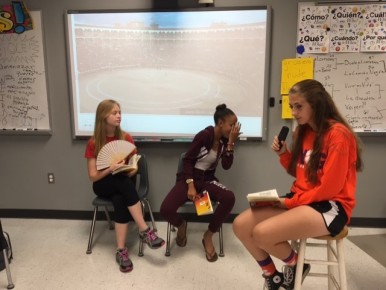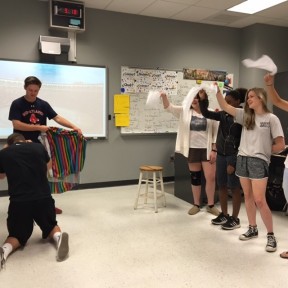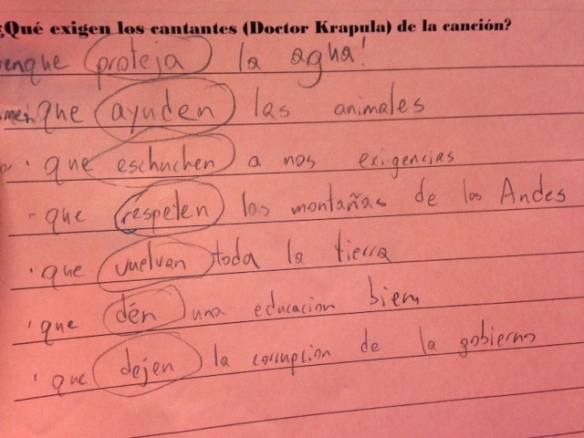 WOW!!! This is year 38 for me…….and it still feels brand new! This will be my eighth full year without a specific textbook, and my fifth “full on” CI intentional year (I was transitioning for several years from the grammar based, vocabulary list laden curriculum). Like so many other bloggers, (here are a few of them Allison Weinhold, Dustin Williamson, Kristy Placido,), I thought I would also share what I plan on teaching this year. Our school year is divided into 4 marking terms, with each class between 45 – 50 minutes in length.
WOW!!! This is year 38 for me…….and it still feels brand new! This will be my eighth full year without a specific textbook, and my fifth “full on” CI intentional year (I was transitioning for several years from the grammar based, vocabulary list laden curriculum). Like so many other bloggers, (here are a few of them Allison Weinhold, Dustin Williamson, Kristy Placido,), I thought I would also share what I plan on teaching this year. Our school year is divided into 4 marking terms, with each class between 45 – 50 minutes in length.
Spanish IV
Term 1
- I will kick the year off with some great plans from Carrie Toth, using Atrévete . We will take about 4 days to go through this material, break for Labor Day and come back ready to plunge into the school year.
- La Llorona de Mazatlán by Katie Baker. This will be my 4th time teaching it; it has always been a popular novel and I have blogged about it extensively. My students become entranced by the legend, the music and all of the additional cultural aspects. They also really enjoy the “teenage love interest” in the story, although the ending always makes them mad.
- Día de los Muertos with some of the elements from this unit a few years ago.
- El Arte de Frida Kahlo, Diego Rivera, and, to a lesser extent, Pablo Picasso and Salvador Dalí. I’ve done some considerable blogging about this unit in the past. This will be the 7th time in this unit that has undergone a lot of change since it’s inception. It is now heavier on Frida/Diego and Mexican history, with less time for Picasso and Dali. This year I am excited to be adding the novel Frida by Kristy Placido for the first time.
Term 2
- The novel Frida will carryover into Term 2.
- La Comida de México y Perú (and Argentina if there is time) I’ve been teaching this unit for 5 years and it is always a favorite. The original inspiration for this unit came from Kara Jacobs. Great music such as Mole by Lila Downs, the Cuy ads and songs from Peru as well as the Ñam Ñam Boys and the Anita/Beto ads for Inca Kola.
- Las Metas y los Sueños, an important “pre” unit prior to diving into the heaviest, most intense unit. I love this unit as my students explore their own goals and dreams and compare and contrast them with the stories of others (both famous and ordinary). I find that this unit is an exceptionally creative unit for them. Here is an example of what it looked like this past year. It does change from year to year, depending on the current fame of some individuals. The music for this unit is great, with past favorites including Vivir mi vida, No me doy por vencido, Creo en mi, La lista, No creo en el jamas and Celebra la vida.
Term 3
- Vida y Muerte en la Mara Salvatrucha 13 (anonymous) This will be the third time with this novel and it has been a compelling read the past two years. Along with a background unit on the Civil War in El Salvador, the movie Voces Inocentes and parts of Romero, this is an eye opening, thought provoking novel that my students invest in heavily. It helps that they have just finished exploring their own hopes, goals and dreams as they look at the lives of the characters in the novel. The music in this unit includes Casas de Cartón, Gangsta, part of Razones (Bebe), Tu cárcel, Adentro, Nada Valgo sin tu amor and Así crecí.
- Immigration is always a “hot topic” unit where students are challenged by what they think they know and believe. We start with the Statue of Liberty, it’s history, poem and music and go from there. The music in this unit includes Welcome to America, American Oxygen, Wake Me Up, This Land is Your Land (bilingual version), Bandera, ICE, Pa’l Norte, La Bamba, and La Bamba Rebelde, Movies include 30 Days and Which Way Home.
Term 4
- Immigration will carry over into Term 4.
- Narcoviolencia, which I’ve been teaching for 5 years (with original inspiration from Kara Jacobs and Cristina Zimmerman), is an ever evolving unit based on what is happening in Mexico with the violence, cartels, drug warfare, kidnappings and repression, etc. I always base the length of this unit on how much more “heavy” topics my students can continue to benefit from and grow. This past year we were only in it about two and a half weeks because we had spent so much time with Vida y Muerte and Immigration. The music in this unit, however, really draws them in: Lágrimas, La Patria Madrina, Have You Heard, México (Instituto Mexicano del Sonido) and La Llorona (43 Lágrimas) which brings us full circle back to the beginning of the year.
- If I have funding, I would like to purchase La Guerra Sucia or Felipe Alou. If not, I will probably do the novel that I wrote 2 years ago called Amigos, Abrazos y Aventura: Argentina.
Spanish III
Term 1
- The year begins with a short 4 day unit from Carrie Toth, actually from a colleague named Paige, about the Cactus and the Bank. I also plan on using La Persona Especial (as developed by Bryce Hedstrom) with these students, who are all new to me and I’m new to them. I will adjust the questions to a Spanish III level.
- Esperanza by Carol Gaab, one of my favorites! Such a rich story with so many cultural components. For me, I think it is the perfect way to ease my Spanish III students into my style of teaching without any pressure. The story is written essentially in present tense, but lends itself beautifully to past tense retelling. It will also be their first experience with my pretty intense focus on and inclusion of music to not just enhance what we are doing, but to highlight, illustrate and teach. Ave que emigra is the first focus song of the year.
- A brief, 2 week Puerto Rico and food unit with stories written by me and my colleague, Megan Matthews. This is a good, light hearted unit and serves as a nice break from the seriousness of Esperanza.
Term 2
- Día de los Muertos with the possible inclusion of Tumba by Mira Canion, dependent on funding.
- A short unit on clothing with stories written by me and my colleague, Megan Matthews.
- A longer 3 week unit on geography, animals and weather with stories written by me. This unit takes us to the Baltimore Aquarium for a field trip! We skipped this unit last year, and I really missed it. It will be interesting to see what changes are made to it this time around.
- Robo en la noche by Kristy Placido begins as we return from Christmas. Teaching it for the fourth time, this is a great book with so many additional elements with geography, environment, and just fabulous Costa Rica. A favorite song for many students is Pura Vida by Percance.
Term 3
- Robo en la noche continues into Term 3.
- Jai-Alai, flamenco, music and sports from Spain come next, preceding the next novel Bianca Nieves y los siete toritos. Two favorite songs from this unit are Buleria (David Bisbal) and Dame Vida (Huecco).
Term 4
- Bianca Nieves y los siete toritos by Carrie Toth I am looking forward to teaching this again and not feeling the pressure of the end of the year creeping up. I plan to use the Ferdinand movie again as well as Blood Brothers. I love the fact that Carrie got the present subjunctive into this book so naturally. Last year the students really enjoyed the bullfighting elements that easily flow from the novel. They also LOVED Reader’s Theater with this novel, so much that I worried about using it too much!
- Colombia and Juanes is a unit that I have been teaching in some form since 2005, and it has really undergone quite the transformation over the years. In its’ early years it also included the Dominican Republic (Juan Luis Guerra) and Venezuela (Carlos Baute) and was called my Social Awareness Unit. As the unit grew, it just became too large, so it got trimmed to just Colombia and Juanes. It is possibly my favorite subject material of all time to teach and was definitely the first unit that initiated my gradual conversion to CI. I love just about all of Juanes’ music, but the music with social messages is just phenomenal. In this unit we study the Civil War in Colombia, which just might be over (finally), the impact of drugs, Pablo Escobar, landmines and Juanes’ quest for peace, not just for Colombia, but for the world. I use the movie Los Colores de las Montañas, a beautiful movie. I love the stories that I’ve written for this unit and I love the impact that the unit has on students. On the end of the year evaluation/assessment of the course most students list this unit as their favorite, year after year. I have never taught it as the last unit of the year before, but I want to be able to give Bianca Nieves the chance to not be rushed this year.
So, these are the plans. But, as all plans go, they are subject to change and evolution. Time will tell!

 I have written extensively about using music in my classroom, especially the past two years. More infrequently I may write a post about student projects or PBT’s. However, today, day 5 of summer break, I started thinking about the past school year and what I did to help my students remember the year and to be able to appreciate what we had covered. The last week of school, I created a “year in review” presentation for both my Spanish III and Spanish IV classes. While I was not surprised by the amount of music that we had incorporated into our units and into our opening routine each day, I was surprised by the amount and variety of their expressions in art. In my individual “end of the year” evaluation of the course, just about every single one of those 110 evaluations indicated music as a major way that they had learned Spanish and enjoyed class. Most of them now have Spanish music in their personal playlists. Also mentioned in those evaluations was the additional learning, exploring and enjoyment that was derived from other artistic endeavors. From Martina Bex’s “freeze frame” to Allison Weinhold’s “Baila viernes” to the creation of original songs and artwork to showcase and express what we were studying, art was everywhere.
I have written extensively about using music in my classroom, especially the past two years. More infrequently I may write a post about student projects or PBT’s. However, today, day 5 of summer break, I started thinking about the past school year and what I did to help my students remember the year and to be able to appreciate what we had covered. The last week of school, I created a “year in review” presentation for both my Spanish III and Spanish IV classes. While I was not surprised by the amount of music that we had incorporated into our units and into our opening routine each day, I was surprised by the amount and variety of their expressions in art. In my individual “end of the year” evaluation of the course, just about every single one of those 110 evaluations indicated music as a major way that they had learned Spanish and enjoyed class. Most of them now have Spanish music in their personal playlists. Also mentioned in those evaluations was the additional learning, exploring and enjoyment that was derived from other artistic endeavors. From Martina Bex’s “freeze frame” to Allison Weinhold’s “Baila viernes” to the creation of original songs and artwork to showcase and express what we were studying, art was everywhere.






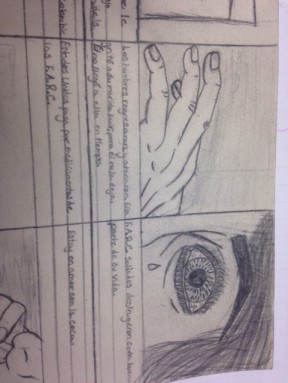












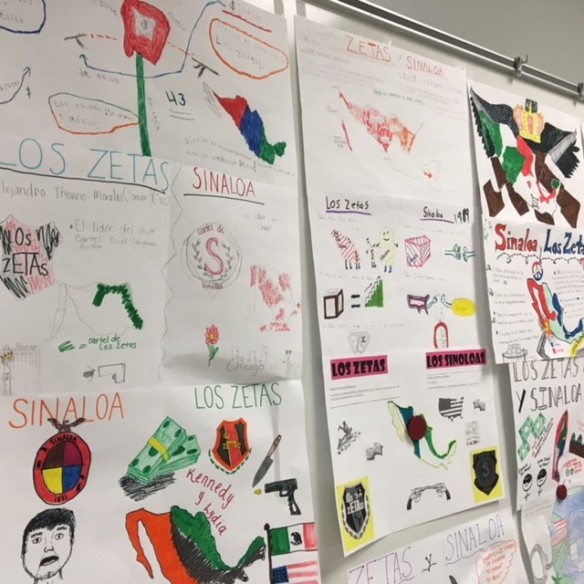 Cho
Cho





